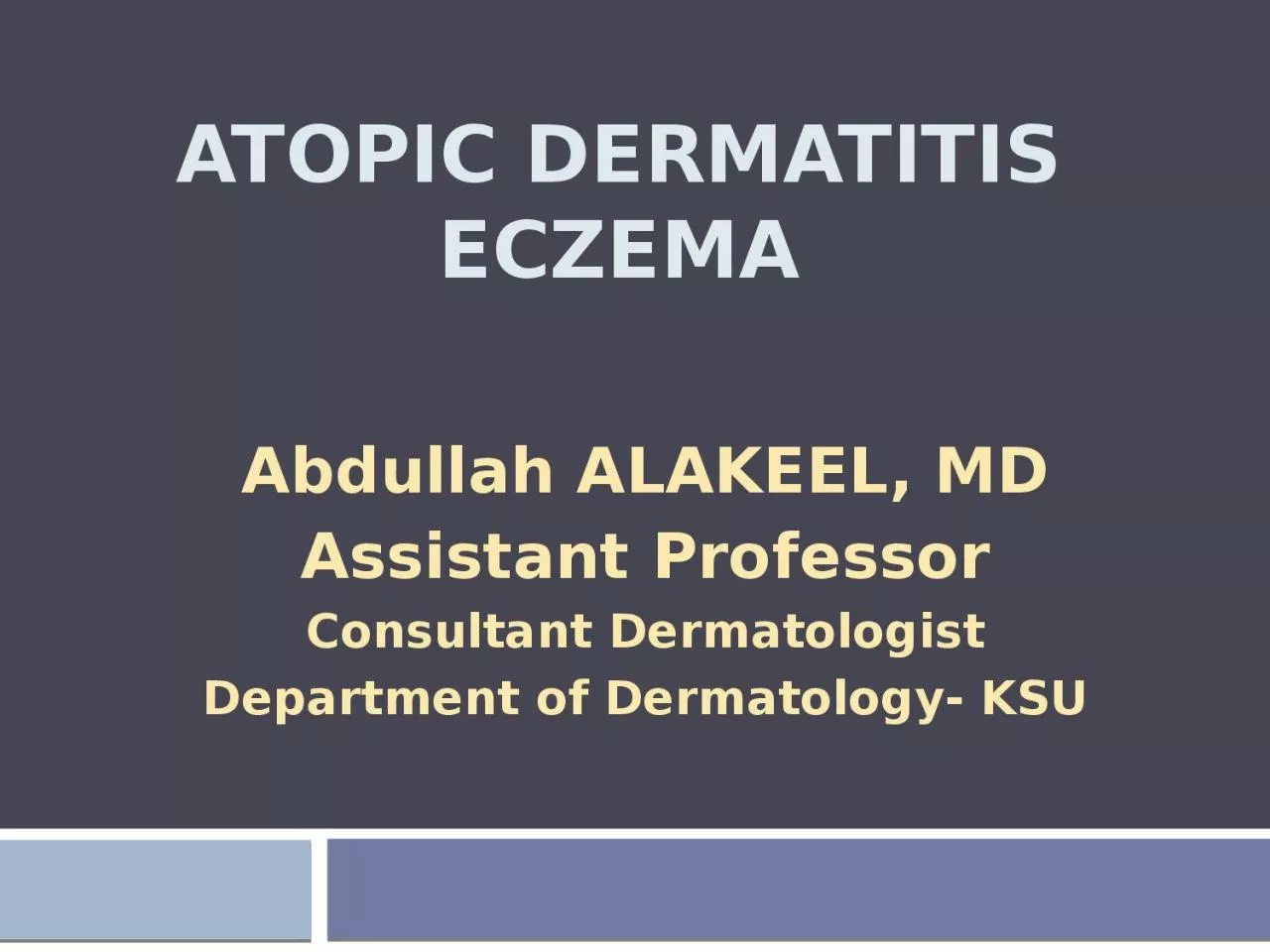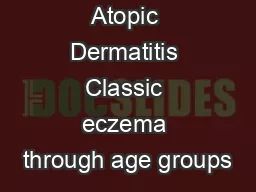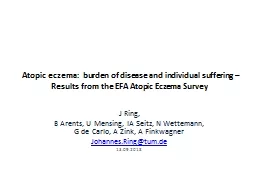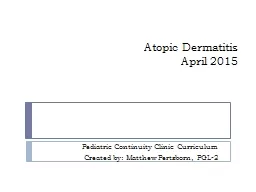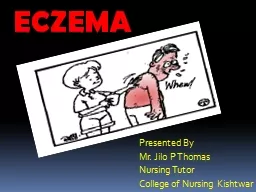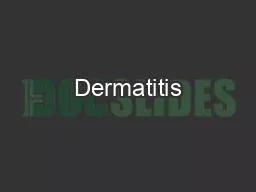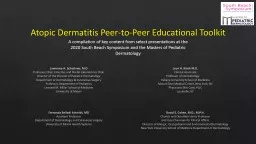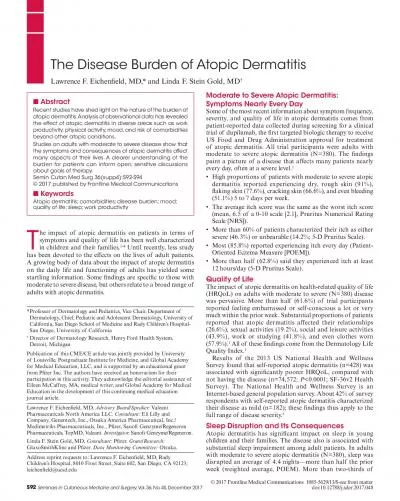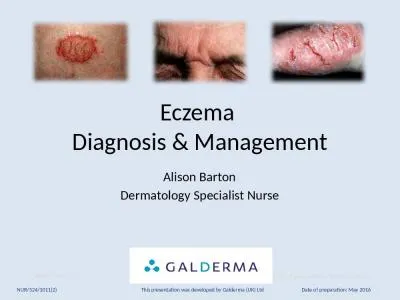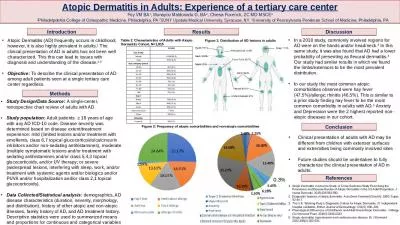PPT-ATOPIC Dermatitis eczema
Author : berey | Published Date : 2023-05-22
Abdullah ALAKEEL MD Assistant Professor Consultant Dermatologist Department of Dermatology KSU Eczema Definition inflammation of the skin Eczema vs dermatitis Acute
Presentation Embed Code
Download Presentation
Download Presentation The PPT/PDF document "ATOPIC Dermatitis eczema" is the property of its rightful owner. Permission is granted to download and print the materials on this website for personal, non-commercial use only, and to display it on your personal computer provided you do not modify the materials and that you retain all copyright notices contained in the materials. By downloading content from our website, you accept the terms of this agreement.
ATOPIC Dermatitis eczema: Transcript
Download Rules Of Document
"ATOPIC Dermatitis eczema"The content belongs to its owner. You may download and print it for personal use, without modification, and keep all copyright notices. By downloading, you agree to these terms.
Related Documents

